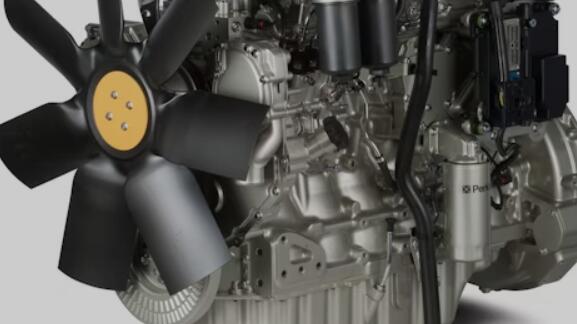
The E398 error on a Perkins 1106D generator typically indicates a low fuel rail pressure fault. This guide provides troubleshooting steps and possible solutions to resolve the issue.
Preparations:
Perkins EST 2024A & 2023A & 2019A Software Free Download
Perkins SPI2 2018A EPC+Service Manual Free Download
Perkins Communication Adapter 3
Understanding the Issue
The Electronic Control Module (ECM) monitors fuel rail pressure to ensure proper engine performance. The E398 error is logged when the ECM detects that the actual fuel rail pressure is consistently lower than the pressure requested by the electronic control system.
Conditions That Trigger This Code
The following diagnostic codes are associated with this fault:
- 262-3: 5-volt sensor DC power supply voltage is below normal (active).
- 262-4: 5-volt sensor DC power supply voltage is below normal (active).
- 1797-3: “Fuel Rail Pressure Sensor Voltage Above Normal” is not active.
- 1797-4: “Fuel Rail Pressure Sensor Voltage Below Normal” is not active.
- No active diagnostic codes for the fuel rail pump or injectors.
System Response
When this error occurs:
- The warning light illuminates, and the diagnostic light flashes the event code.
- An event code is logged in the ECM.
- Performance Impact:
- The derating lamp turns on.
- Engine power is throttled after the key switch cycles from OFF to ON.
Possible Causes of Low Fuel Rail Pressure
Low fuel rail pressure can result from:
- Fuel Return System Failure
- Blockages or restrictions in the return line.
- Fuel Pressure Control Failure
- Malfunction of the pressure control valve.
- Leak in the High-Pressure Fuel System
- Check for visible leaks or drops in pressure.
- Defective Components
- Faulty pressure relief valve, fuel pump, or electronic injectors.
Troubleshooting Steps
1. Inspect the Fuel System
- Check for blockages, leaks, or damaged lines in the fuel system.
- Ensure the fuel tank is free of debris and contaminants.
2. Test the High-Pressure Fuel Pump
- Use a diagnostic tool to verify the output of the high-pressure pump.
- Replace the pump if it fails to maintain adequate pressure.
3. Inspect the Pressure Relief Valve
- Verify that the valve is functioning correctly.
- Replace it if it’s stuck open or not holding pressure.
4. Verify the Electronic Injector Functionality
- Check each injector for faults using the ECM.
- Replace any defective injectors.
5. Check the ECM and Electrical Connections
- Ensure all sensor connections are secure and free of corrosion.
- Test the 5-volt power supply to the fuel rail pressure sensor.
6. Monitor Rail Pressure in Real-Time
- Use diagnostic software to compare actual and desired rail pressure values.
- Address discrepancies by adjusting or replacing components as needed.
Important Notes
- An event code does not always indicate an electronic system failure.
- Refer to the System Operation, Testing, and Adjustments Manual for detailed procedures.
- If issues persist, consult with a Perkins-certified technician.
Result
- OK: The problem is resolved, and the generator is functioning normally.
- Not OK: Further investigation and repairs are required.
More trouble repair case for Perkins,pls refer to:Perkins Trouble Repair.
Leave a Reply